Two minute review
For many, the Mini brand is synonymous with smaller, lighter, fun-to-drive cars. While modern Minis have grown in size and weight under BMW's watch, they're still a blast to toss around the bends, and much safer than the 1960's original.
No model in Mini's lineup epitomizes this more than the 3-door Cooper S, which is now available as an EV – known as the Mini Cooper SE in the US, and Mini Electric in the UK and Australia.
This isn't Mini's first foray into electrification. BMW used the Mini E (2009-10) and the BMW ActiveE (2012) – both lease-only demonstration cars – as testbeds for the BMW i3.
Unlike its bespoke predecessor, today's Mini Cooper SE is mass produced on the same assembly line as its ICE (internal combustion engine) counterpart. But, while it shares some drivetrain components with the BMW i3, it doesn't benefit from its own EV platform.
As such, the Mini Cooper SE makes one major compromise: the 32.6KWh battery provides a range of just 110 miles EPA (177km) – or 144 miles (235km) WLTP.
It's fine for commuting, but certainly not sufficient for long-distance travel – something that's often required in vast countries like the US and Australia. But don't dismiss the Mini Cooper SE or lump it alongside the Mazda MX-30 just yet.
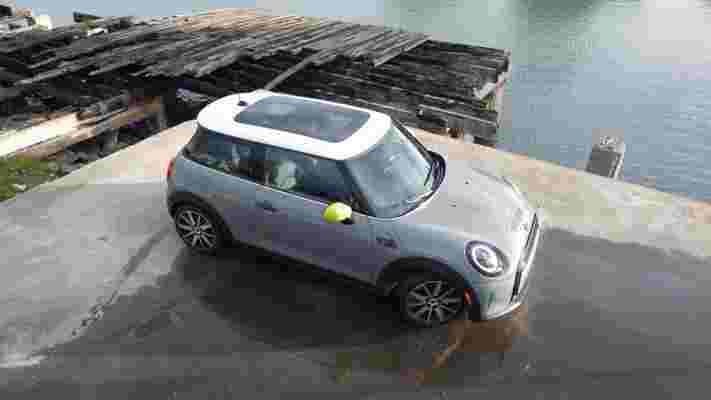
With prices starting at just $29,900 / £27,000 / AU$61,479 (before incentives) the Mini Cooper SE is one of the most affordable EVs currently sold, and it's currently the most affordable electric car in the US.
The base model is well equipped in all markets, and includes heated seats and a heated steering wheel, an 8.8-inch infotainment system with navigation, plus auto LED headlights and wipers. Other trims add a power moonroof and power folding mirrors, leather seats, a Harman-Kardon audio system, adaptive cruise control, and self parking.
All versions support 50KW DC fast charging (80% in 36min) and 7.4KW AC (level 2) charging. The Mini Cooper SE also includes basic driver assistance and safety features plus wireless Apple CarPlay (but not Android Auto). Some trims even offer a (small) Qi wireless phone charger and a heads-up display. What's strangely missing are power seats, although the manual controls include adjustable lumbar and thigh support.
Modern Minis are full of personality and charisma, with quirky yet delightful retro design touches inside and out, and the Mini Cooper SE is no exception. It's basically identical to the gasoline-powered 3-door Cooper S, with a few tweaks.
Ditto the interior, which matches the ICE model's, but boasts yellow accents for the start / stop button and gear selector, plus custom Mini Cooper SE finishes for the dashboard and central display surround.
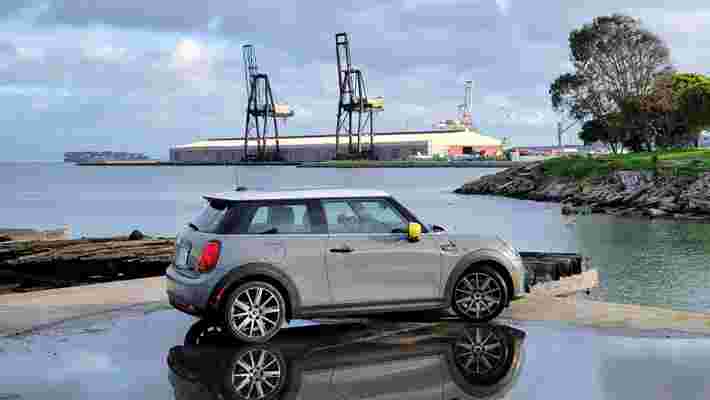
Technology isn't the Mini Cooper SE's forte. It only packs basic connectivity, with LTE providing real-time traffic for maps and enabling phone remote control plus Amazon Alexa support via the Mini Connected app. There's no level 2 ADAS (advanced driver assistance system) here, nor WiFi hotspot, and the infotainment system feels dated.
The Mini Cooper SE is an absolute hoot to drive and it's one of the fastest Minis available today. The ride is typically Mini, meaning it's stiff, but unlike Mini's ICE versions, it's tuned to be slightly more compliant.
Disable the traction control, and the Mini Cooper SE becomes downright hilarious. All that torque makes it easy to spin the front wheels like a hooligan – especially in corners, where the resulting understeer is easy to control with the throttle. Prefer to chill? The Mini Cooper SE features four drive modes (Sport, Mid, Green, and Green+), and two levels of regen (low to coast and creep, and high for one-pedal driving).
Whether you're commuting, getting groceries, or taking your granny to bingo, the Mini Cooper SE will put a smile on everyone's face. It’s also comfortable enough for two adults, plus maybe two kids.
Overall, we really like the Mini Cooper SE. It delivers incredible value, looks fantastic, and is an absolute blast to drive. Yes, the tech isn't very fresh, and space is at a premium, but build quality and materials are best in class.
Ultimately, the Mini Cooper SE's biggest shortcoming – and a dealbreaker for many – is its limited range. But if you can live 110 miles (177km) at a time, we think this EV makes a ton of sense.
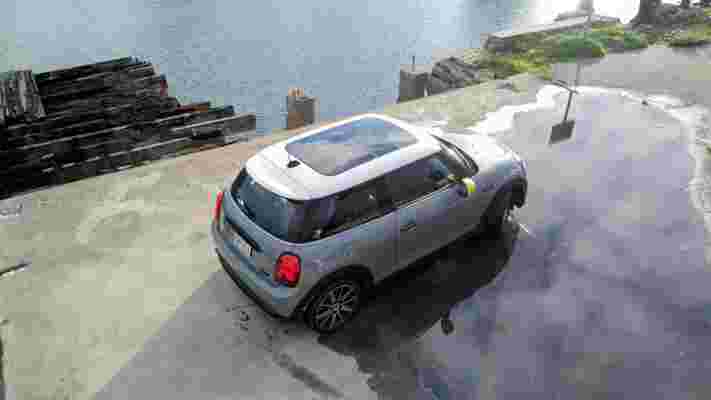
Mini Cooper SE price and availability
The 2022 Mini Cooper SE starts at $29,900 for the base Signature trim, making it the most affordable EV on the US market today – and that's before incentives.
For example, the Mini Cooper SE's price drops to just $20,400 with California's $2,000 state rebate and the $7,500 federal tax credit. This trim includes heated seats and a heated steering wheel, an 8.8-inch infotainment system with navigation, plus auto LED headlights and wipers.
Considering the lowest trim gas-powered Cooper S costs $26,900, that makes the Mini Cooper SE a fantastic value.
Upgrading to the $33,900 Signature Plus trim adds a power moonroof, Harman Kardon audio system, and power folding mirrors. The $36,900 Iconic trim further adds leather seats, adaptive cruise control, self parking, a Qi wireless phone charger, and a heads-up display.
In the UK, the Mini Electric costs between £27,000 and £34,500 with three versions to choose from. Australia gets two models costing AU$61,479 and AU$68,956.
The 2022 Mini Cooper SE we reviewed came with the Iconic trim, Moonwalk Grey Metallic paint, white roof, yellow side mirror caps, Scissor Spoke wheels, Carbon Black leather seats, and Mini Electric dashboard finish. It cost $36,900.
Mini Cooper SE design
If you're familiar with the gas-powered Cooper S, then you'll feel right at home with the Mini Cooper SE. Both cars are pretty much identical inside and out, save for a few minor cosmetic tweaks.
As such, the Mini Cooper SE delivers the same funky yet charming retro design Minis are famous for. And while BMW has updated the Mini's design several times over the last twenty years, it's still full of whimsy and character.
The most obvious exterior update is in front, where Mini's familiar grille shape remains, but is closed for better aerodynamics. Both the plug-shaped 'E' logo and 'S' emblems on the rear hatch, front repeaters, and door sills are painted yellow.
The same 'E' logo is also embossed in the charging port door. Matching yellow side mirror caps are optional. While not unique to the Mini Cooper SE, we like the Union Jack tail lights.
As you'd expect, the interior also carries over from the ICE model. Here, you'll find yellow accents on the gear selector, start / stop button, and instruments, plus a unique pattern on the circular center screen surround, and an optional Mini Electric dashboard finish.
Everything else is standard Mini inside, from the central 8.8-inch infotainment display to the iconic toggle switches between the sun visors and below the climate controls.
The oblong instrument panel is attached to the steering column and moves up and down with the steering wheel. It looks fully digital at first glance, but actually combines a rectangular display with a semi-circular analog power gauge on the left and a semi-circular LED battery meter on the right.
All three instruments are backlit and mounted behind a translucent panel, making them look like one screen. It's simple but effective.
Surprisingly, the Mini Cooper SE lacks power seats, even as an option, but the manual heated seats are comfortable and offer adjustable thigh and lumbar support. You even get additional Union Jacks – embossed in the head rests – if you choose the Carbon Black leather seats.
Overall, we're quite happy with the interior design, but we'd love to see yellow seat belts as an option. Can you please make this happen, Mini?
The Mini Cooper SE also features the same back seat as other 3-door Minis. It's pretty cramped, only includes seatbelts for two, and lacks a center armrest.
Realistically, it's best suited for kids, though adults will probably fit in a pinch. Luggage capacity is only 8.7cu-ft (211 liters) – just like the gas-powered Cooper S – but the back seat folds down 60 / 40, for up to 34 cu-ft (731 liters) of storage. There is no frunk (front trunk).
Mini Cooper SE drive, range and charging
With 181hp / 199lb-ft (135kW / 270Nm) on tap, the front-wheel drive Mini Cooper SE does the 0-60mph sprint in about 6.5 seconds (0-100km/h in about 7s). That actually makes it one of the fastest Minis currently on the market.
Unlike other EVs, which tend to be heavy, the Mini Cooper SE only weighs 3,144lbs (1,426kg) – about 300lbs (136kg) more than the ICE version – primarily because of its smaller (and lighter) 32.6KWh battery.
Most of that extra weight is located below the floor, and distributed more evenly – 58/42 vs. 63/37 on the gas-powered Cooper S. And despite riding 0.7-inches (1.8cm) higher than the ICE model, the Mini Cooper SE handles quite well, with very little body roll.
While it's nimble and tossable, it's still compliant enough to keep its composure on bumpy roads. The ride is pleasantly stiff, but not as punishing as some earlier Minis.
Basically, the Mini Cooper SE is the closest thing we've driven to an electric hot-hatch. It's playful and begs to be hooned during every errand. While it's definitely not as fast as some other EVs on paper, the combination of ample torque, great handling, and small size makes it feel much quicker than it is.
And for even more LOLs, just disable the traction control and use the throttle to modulate wheel spin and understeer. Fun!
That's not to say the Mini Cooper SE is always high strung. With two levels of regen (high for one-pedal driving, and low to coast and creep), plus four drive modes to choose from (Sport, Mid, Green, and Green+), it calms down when you want it to.
It's also refined and comfortable enough no matter where you're going and who's riding along. We mostly drove in Sport mode, switching to Green mode to conserve energy.
While the Mini Cooper SE's brakes feel pretty decent, the electrically assisted steering doesn't provide much feedback. Still, it's far from numb. The only niggles we have are minor and are easy to fix in software: the drive mode resets to Mid everytime you start the car, the electric parking brake doesn't auto engage when you put the car in park, and there's no setting to auto fold the side mirrors when the car is locked.
Ultimately, the Mini Cooper SE's only major drawback is its limited range – 110 miles EPA (177km) and 144 miles (235km) WLTP. That's not a lot, no matter how you cut it.
Sure, it's probably enough if you're commuting and charging at home every night, or running errands in the city, but forget doing long-distance road trips in the Mini Cooper SE – something that's increasingly possible with several other EVs.
That being said, we drove from San Francisco to Bodega Bay and back – about 160 miles (256km) total – and DC fast charged on Electrify America's network in Petaluma each way (about 25 minutes per session).
While we don't mind taking breaks, this trip doesn't require any charging stops in a Tesla Model 3 Long Range . On the plus side, the Mini Cooper SE is rather conservative with its indicated range, which is a big plus.
When it's time for a refill, the Mini Cooper SE supports DC fast charging at up to 50KW. That's not spectacular, but since the battery is small, it only takes about 36 mins for an 80% charge.
In addition, the Mini Cooper SE handles AC (level 2) charging at up to 7.4KW (11KW in the UK and Australia), which boosts the charge level by up to 20% per hour. Here in the US, the Mini Cooper SE comes with a 120V 16A level 1 charging adapter.
Mini Cooper SE specs and tech
Most EVs are brimming with tech, but that's not the case here. Other than gaining the ability to remotely monitor charging, the Mini Cooper SE offers the exact same technology package as the gas-powered Mini Cooper S.
This includes basic LTE connectivity for navigation updates and real-time traffic in maps, plus phone remote control and Amazon Alexa functionality – both enabled by the Mini Connected phone app.
You also get a basic set of driver assistance and safety features consisting of forward collision warning, pedestrian warning, and automatic emergency braking. But the Mini Cooper SE lacks blind spot monitoring, lane departure warning, and lane keeping assist.
And while adaptive cruise control is optional, there's no level 2 ADAS (advanced driver assistance system), 360 degree view, Wi-Fi hotspot, or support for OTA updates.
Some tech is only available on some trims, like self parking and the color heads-up display. The Qi wireless phone charger is also optional, and is located inside the center armrest.
Strangely, it's too small for most modern handsets. Perhaps Mini just expects you to buy an iPhone 13 mini ? At least there's a pair of USB ports (one Type-A and one Type-C) in front of the center console for charging and connectivity.
The Mini Cooper SE's infotainment feels rather dated, like a leftover from BMW's parts bin. While it's responsive enough, it's simply not very intuitive. You control it either directly via the central 8.8-inch touchscreen or by using the iDrive-like puck in the center console.
The Harman-Kardon audio system sounds decent and features Bluetooth connectivity, AM / FM terrestrial radio, and SiriusXM satellite radio.
While the Mini Cooper SE supports wireless (and wired) Apple CarPlay, it never worked for us, no matter what we tried. This is odd, considering Apple CarPlay is usually bulletproof on other vehicles we've tested.
But what's truly surprising is that Android Auto isn't available on the Mini Cooper SE. How is that even possible in 2022? Hopefully, Mini will revise its infotainment system to include Android Auto on next year's model.
Should I buy a Mini Cooper SE?
Buy it if:
You want a driver's car The Mini Cooper SE is an absolute hoot to drive. It's the closest thing we've driven to an electric hot-hatch.
You want to travel in style The Mini Cooper SE's retro design is full of personality and charisma, and is basically identical to its ICE counterpart.
You need an affordable EV At just $29,900, the Mini Cooper SE is the most affordable EV in the US, and that's before up to $9,500 in incentives.
Don't buy it if:
You want to go on road trips With a range of just 110 miles, the Mini Cooper SE is fine for commuting but certainly not meant for long-distance travel.
You need space for people and things The Mini Cooper SE's back seat is pretty cramped, and trunk space is somewhat limited even with the back seat down.
You want the latest in technology The Mini Cooper SE only includes basic driver assistance, and the infotainment system feels dated and lacks Android Auto.
First reviewed: February 2022
OM System OM-1 vs Fujifilm X-T4: which mirrorless camera should you buy?
The OM System OM-1 was always shaping up to be one of the most exciting cameras of the year , and it appears to have mostly delivered on that hype. But is it a match for its most natural rival, the excellent Fujifilm X-T4 ? Both cameras are smaller and more affordable than their full-frame rivals – so we've compared their specs to see which one you should buy.
Both the OM System OM-1 and Fujifilm X-T4 are hybrid mirrorless cameras that are designed to shoot stills and video. But there are significant differences, too. The X-T4 is much older, having launched in February 2020, whereas the OM-1 landed on February 15, 2022. And while Fujifilm's camera has a larger APS-C sensor, its OM System rival brings the first 'stacked' Four Thirds chip.
The latter is the key to some performance upgrades that, OM System claims, will help the OM-1 bridge the gap in its sensor size to APS-C rivals (like the X-T4) and even full-frame cameras, whose sensors are four times larger.
While we'll have to do some in-depth testing with the OM-1 to see whether it can back up those claims, a specs-based comparison with the X-T4 is still a revealing way to tease out the main differences between these powerful mirrorless cameras. If you're looking for a hybrid all-rounder, both will likely make fine companions – but which is the best one for your needs?
Price
There's a fairly big price difference between these two cameras, partly due to their relative ages, which could sway you one way or the other.
The OM System 'Olympus' OM-1 will be available to buy in early March for $2,199 / £1,999 / AU$3,299 body-only. That's a fairly big jump up from its natural predecessor, the Olympus OM-D E-M1 Mark III , which launched for $1,799 / £1,599 / AU$3,099 back in 2020.
The Fujifilm X-T4, meanwhile, launched for $1,699 / £1,549 / AU$2,999 in 2020. But you can now find it for around 10% less than that, which makes it pretty good value in the mirrorless world.
The OM-1 does, though, come with a new 'stacked' sensor which adds to its cost, but brings some advantages in burst shooting and computational tricks, as we'll see.
Design, EVF and battery
Both the OM-1 and X-T4 are relatively small, weather-sealed mirrorless cameras with fully articulating touchscreens, but there are subtle differences between their designs.
The OM-1 is fractionally lighter, weighing 599g with a battery and memory card, compared to the X-T4's 607g. And while both cameras are roughly the same width and height, the OM-1 is deeper thanks to its chunkier grip. If you shoot a lot with longer lenses, the OM System may be more comfortable in the hand.
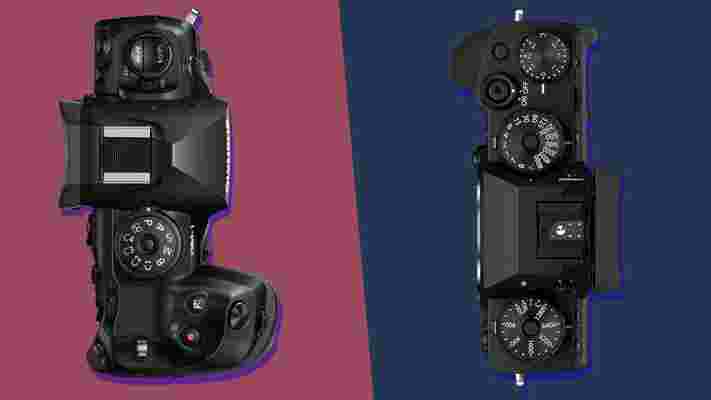
When it comes to the electronic viewfinder (EVF) and rear touchscreen, the OM-1 has the edge due it being the newer camera. OM System's camera has a 5.76-million dot EVF with 0.83x magnification, which is brighter and larger than the X-T4's 3.69-million dot 'finder with 0.75x magnification. Both cameras have a 3in, 1.62-million dot rear touchscreen.
| OM System OM-1 | Fujifilm X-T4 | |
| Size | 134.8mm x 91.6mm x 72.7mm | 134.6mm x 92.8mm x 63.8mm |
| Weight | 599g (inc. battery / SD card) | 607g (inc. battery / SD card) |
| EVF | 5.76m-dots, 0.83x | 3.69m-dots, 0.75x |
| Battery life (CIPA rating) | 510 shots | 500 shots |
The two cameras are both weather-sealed, making them ideal take-anywhere companions for shoots in the great outdoors. On paper, the OM-1 might have the slight edge thanks to its official IP53 rating, which is a first for a mirrorless camera. That rating, which means it's strongly resistant to water splashes, dust and extreme cold, only applies when you use the camera with the new 12-40mm f/2.8 II or 40-150mm f/4 lenses, though. With all other lenses, the rating drops to IPX1.
It's difficult to compare this weather-sealing with the X-T4, because Fujifilm doesn't provide any official rating for its camera. Like the OM-1, though, it can survive temperatures down to -10C, and has 63 weather-sealed points to keep it resistant to dust and moisture. In our experience, the X-T4 is able to survive all but the most extreme shooting situations, but the OM-1's new IP53-rated camera-and-lens combos could give it the slight edge in ruggedness.
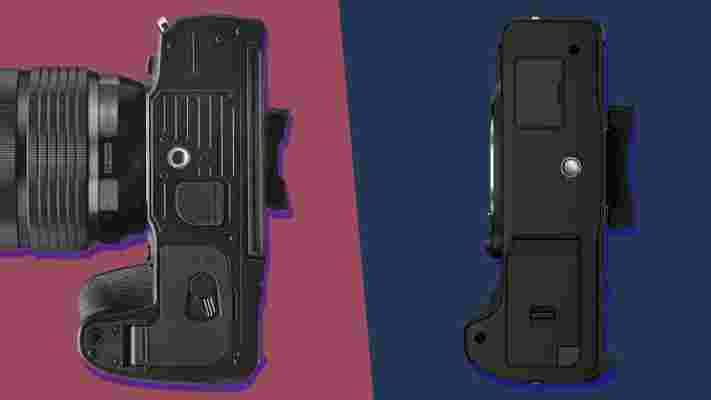
Lastly, both cameras have similar battery lives, according to their CIPA ratings; the OM-1 can keep going for 510 shots, with the X-T4 managing 500 shots in 'normal' mode (or 600 in 'Economy' mode). The two cameras also support USB charging from PD-compatible power banks, although the OM-1 can continue to operate while charging (something the X-T4 can't do). If you tend to go on long shoots, you can also buy battery grips for both cameras.
Overall, these two cameras have similar designs, with the OM-1 edging ahead on paper due to its newer EVF and strong weather-sealing. But they also offer different shooting experiences, with the X-T4's more dials-led approach better for those who prefer a retro, tactile shooting experience.
Features and autofocus
The Fujifilm X-T4 has a larger sensor than the OM-1, allowing it to preserve image quality in low light conditions, but that bigger sensor and its age mean that OM System's camera can offer more powerful burst shooting and computational tricks. This means that the OM-1 leans more towards software tricks like LiveND, while the X-T4's in-camera processing is more about adding film-era looks to your photos with its Film Simulations.
Both cameras have powerful in-body image stabilization (IBIS) systems that rival the latest full-frame cameras. The OM-1 promises seven stops of compensation from its camera body, or eight stops with compatible lenses. On paper, that's slightly better than the X-T4, which can achieve a maximum of six-and-a-half stops of stabilization with the 18 lenses that support this top limit. Fujifilm's other lenses vary from between five and six stops when used with the X-T4, which is still enough to let you shoot with slow-ish shutter speeds handheld or iron out micro-jitters in video.
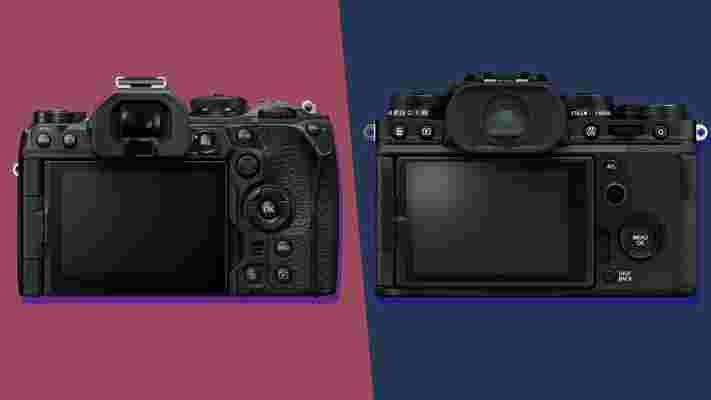
The OM-1 also has the edge when it comes to burst shooting speeds. When using its electronic shutter, it can shoot at a lightning-fast 50fps with full autofocus and autoexposure. The caveats here are that this is only possible with six of OM System's Pro lenses, and that the OM-1's buffer also fills up after 96 raw files in this mode (so less than two seconds of shooting). If you don't mind locking your autofocus on the first frame, it can even go to 120fps – something we've only seen previously on the Nikon Z9 .
By comparison, the Fujifilm X-T4's continuous shooting is a little more modest, but still perfectly capable of keeping up with most moving subjects. Its fastest frame-rate of 30fps incurs a 1.25x crop, taking the sensor closer in size to the OM-1's Four Thirds chip, and the buffer can only swallow 33 raw files at these speeds. Even at the top 15fps speeds with its mechanical shutter, the X-T4's buffer will only hold for less than three seconds.
| OM System OM-1 | Fujifilm X-T4 | |
| IBIS | 8 stops (with compatible lenses) | 6.5 stops (with compatible lenses) |
| Burst shooting top speed (buffer) | 50fps (96 raws / 97 JPEGs) | 30fps (33 raws / 60 JPEGs) |
| Burst shooting (mechanical shutter) | 18fps | 15fps |
It's a little difficult to compare autofocus systems without side-by-side testing, but the OM System OM-1 has certainly taken a step up from the Olympus OM-D E-M1 Mark III it's based on. This is largely thanks to the Quad Pixel AF system that's possible on the OM-1's new Quad Bayer sensor, which gives it 1,053 cross-type autofocus points.
OM System says it's also improved the algorithms for face- and eye-detection on the OM-1, while the list of the subjects that it recognizes for tracking is longer than the X-T4's; you get animals, birds, cars, planes, helicopters and even trains. The X-T4, meanwhile, has 425 phase-detect focus points and generally locks onto and tracks moving subjects well, but lacks their subject-tracking powers of the OM-1.
The software-based features of both cameras also reflect their differing styles. The OM-1 boasts a lot of computational features that make it a good option for those who prefer not to carry extra accessories like tripods and ND filters. Its LiveND feature, for example, now digitally simulates ND filters going up to ND64 strength (that's six stops), which is ideally for blurring moving water. Other features including Live Composite (for handheld light painting and long exposures) and High-Res Shot mode (which composites several shots to give you a 50MP file) are also on board.
By contrast, the Fujifilm X-T4 is a much more traditional camera, offering fewer in-camera processing options, but satisfying film fans with its Film Simulation modes. These are based on the film stocks from its past and are a fun way to get characterful JPEGs straight out of camera.
Image and video quality
Judging the OM-1 and X-T4's respective image and video quality will need more real-world testing, but we can make broad comparisons based on their specs. In short, the X-T4 offers higher-resolution 26MP stills from a larger sensor, although it's a little more complicated than that.
The OM-1 brings the first 'stacked' Four Thirds sensor and OM System claims this boosts its photographic performance to levels of APS-C and even full-frame sensors. This sensor apparently delivers an extra stop of dynamic range, and a two-stop boost to noise performance, compared to the E-M1 Mark III.
We're looking forward to finding out if these claims stack up in reality, but at the very least it means we should see improved ISO performance that gets close to APS-C cameras like the X-T4. This would be very welcome, because low-light performance was one of our biggest gripes with cameras like the E-M1 Mark III – on that model, we even found shots at ISO 3200 displayed a significant drop in quality.
The X-T4, meanwhile, is more of a known quantity – its 26.1MP X-Trans IV BSI has long been our favorite APS-C sensor, even if it's now nearing the end of its life. At its price point, you still won't find a camera that matches its low-light performance or resolved detail, though the rumored Fujifilm X-H2 is expected to take things up a notch with Fuji's first stacked sensor in May.
| OM System OM-1 | Fujifilm X-T4 | |
| Sensor | 20.4MP stacked BSI Four Thirds | 26.1MP X-Trans IV BSI APS-C |
| Native ISO | 200 - 25,600 | 160-12,800 |
| Max shutter speed | 1/32,000s | 1/32,000s |
| Video (max res/frame-rate) | 4K/60p | 4K/60p (1.5x crop) |
| Slo-mo video | 1080/240p | 1080/240p |
On paper, the OM-1 and X-T4 are similar beasts when it comes to video. The OM-1 can shoot uncropped 4K/60p video with 10-bit 4:2:2 color depth and autofocus, plus slow-motion footage at 1080/240p (with a small crop). The X-T4, meanwhile, can shoot 4K/60p video (with a crop) at 10-bit 4:2:0, or 4K/30p from the full width of its sensor.
While the X-T4 can shoot 4K/60p video in a higher bit-rate (at 400Mbps, compared to the OM-1's 202Mbps, the OM System camera fights back with the ability to output 12-biK 4k raw video over its HDMI port to external recorders like those from Atomos, albeit via its micro HDMI port.
Early thoughts
The price and age difference between the OM System OM-1 and Fujifilm X-T4 certainly play a part in their relative skill sets, but choosing between them is more about your preferred style of shooting.
On paper, the OM-1 is certainly shaping up to be a more powerful camera for sports and wildlife shooting, thanks to its speedy burst shooting and new autofocus skills. If you like the sound of its in-camera processing tricks, which sometimes negate the need to bring accessories like tripods and ND filters, then it could well be the better choice for you.
But at current prices, the X-T4 is about 30% cheaper than the OM-1 – and if you prefer its tactile shooting experience, retro looks, Film Simulations and powerful video skills, then it remains an excellent pick for those who don't want the cost and greater overall system size of full-frame cameras.
A lot will depend on the OM System OM-1's performance in our tests, though, so we'll be revisiting this head-to-head once we've spent more time with it in the field.
There’s never been a better time to buy a PS5 SSD
After almost a year and three months of the PlayStation 5 being on sale, now is the right time to buy a PS5 SSD if you’re running low on storage space.
Today, you can find some of the best PS5 SSDs available for just $150 / £150, with drives like the WD Black SN850 frequently on sale for its lowest-ever price in the UK. In the US, GameStop Pro members can get the Samsung 980 Pro 1TB with a heatsink pre-installed for just $189.99 , which is a great deal on a new drive that was only announced a few months ago.
While some might scoff at paying over a hundred bucks for more storage space, the new prices are a notable drop from the previous $290 / £220 tags that we’ve been used to seeing. These deals are superior to what we saw during Black Friday 2021 , too, where the discounts weren’t enough to make any drive worthy of an impulse buy.
Go bigger
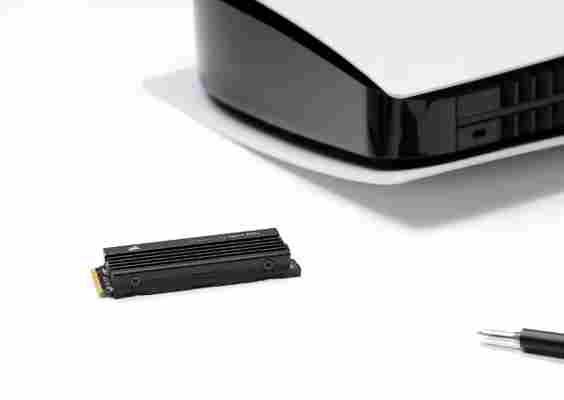
If 1TB isn’t enough space, higher capacity 2TB drives have also received more generous discounts recently, with the Samsung 980 Pro 2TB now just £269.95 in the UK, which is significantly cheaper than the eye-watering price of £444 (or around $592) that we saw back in December 2020 .
That’s still not exactly affordable, mind you, but it’s significantly better value than a mere 12 months ago, which shows that SSD prices are dropping at a steady rate. However, this trend might not continue as " material contamination " has affected some NAND flash production lines, which could result in a price spike of 5 to 10%.
If you really want to get the most value for your money before that happens, though, there are further savings to be had if you’re comfortable installing a heatsink yourself – which is a requirement if you want to use an NVMe SSD on PS5.
However, I’d personally recommend the majority of people grab an SSD that has a heatsink pre-installed. Not only does it make installing a new drive a far less intimidating prospect, but you don’t have to worry about finding a heatsink that meets the exact dimensions as outlined by Sony ( this one will do the job , however).
A prudent move
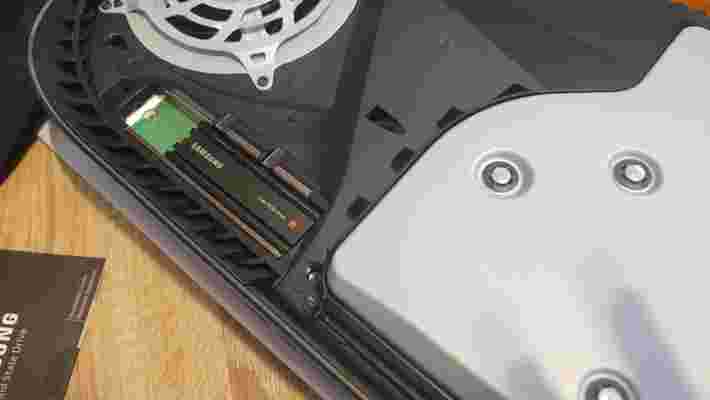
Time has shown that Sony’s decision to allow users to buy off-the-shelf NVMe SSDs was a shrewd one. While it was certainly frustrating that we couldn’t expand the PS5’s storage at launch – and I still think making someone remove the PS5 covers and grab a screwdriver isn’t very user-friendly – it turns out the 10-month long wait for Sony to activate the PS5’s internal SSD drive may have been a good thing in hindsight.
The fact that Sony didn’t go with a proprietary storage drive like Microsoft has with the Seagate 1TB Storage Expansion Card means consumers are now reaping the benefits when it comes to pricing. There’s a large choice of drives and capacities to choose from, and retailers are competing against each other to offer the best deals. Subsequently, it means that the majority of NVMe drives are now noticeably cheaper than Microsoft’s storage solution. You also have some added extra flexibility as these SSD drives will work on PC.
In comparison, the cheapest I’ve ever seen the Xbox Series X/S Seagate 1TB Storage Expansion Card drop to in the UK has been £179.99 , which is still more expensive than equivalent NVMe SSDs that work with PS5. You’re also limited to either 500GB or 1TB of storage on Xbox Series X/S, while PS5 users can install a 4TB SSD if they really want to. That's not to say that Microsoft's decision to go with a proprietary storage drive was wrong, necessarily. The plug-in-and-play nature of the device is truly excellent, and being able to use the SSD on multiple consoles or take it to a friend's house is a really appealing selling point. The fact the 1TB version of the drive was available at launch was also welcome, but it's clear that Microsoft needs to make it more affordable now or offer more alternatives.
Making use of the space
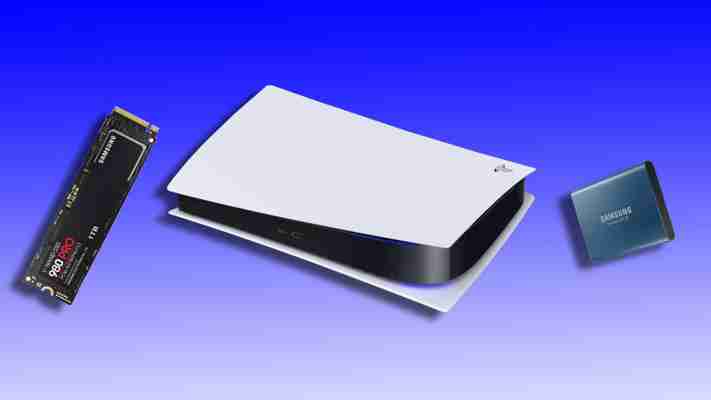
There's also an argument to be made that storage space goes further on PS5 than on Xbox Series X. Even though the PS5 only comes with 667GB of usable storage space compared to 802GB on Xbox Series X, Sony continues to put its Kraken compression tech to good use to shrink games down to more palatable sizes, which ultimately stops space from being gobbled up too quickly.
We’ve seen file sizes in games like Subnautica go from 14GB on PS4 to only 3.5GB on PS5, and Control Ultimate Edition is 39% smaller on PS5 than it is on Xbox Series X – 25.79GB compared to 42.5GB. If storage is cheaper and games are smaller in size on PS5, then that’s a value proposition that’s really appealing no matter how you shake it.
It may have taken longer than expected, then, but if you're tired of deleting games on your PS5's internal storage, there's never been a better time to buy a PS5 SSD, and there are plenty of good PlayStation 5 SSD deals to be had right now.